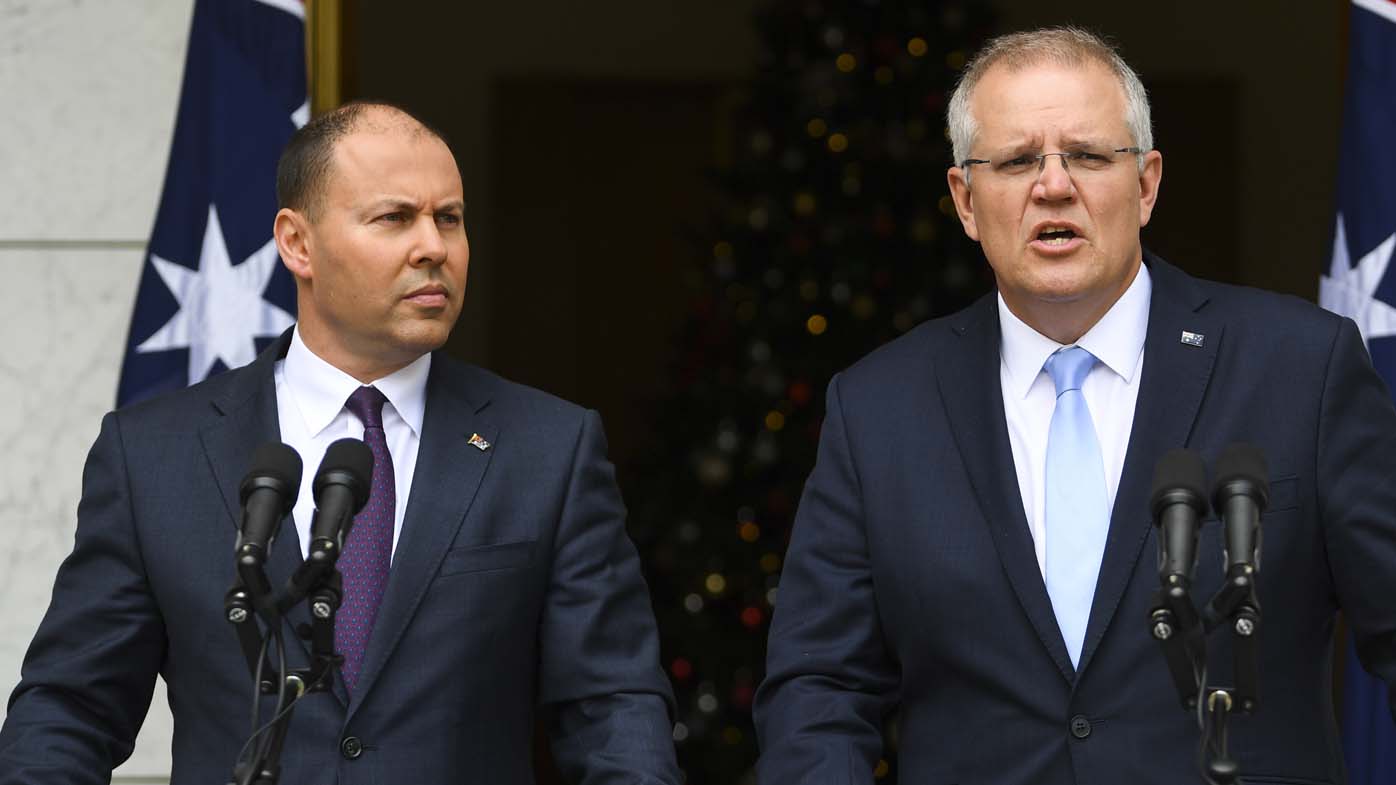This federal budget, Treasurer Jim Chalmers is faced with the task of balancing the need to provide support to Australians struggling in the cost of living crisis with showing restraint amid tough economic conditions.
In the midst of this balancing act are two tax policies: the low and middle-income tax offset (LMITO, or sometimes colloquially known as the "lamington"), which will end this year, and the stage three tax cuts, which are due to come into effect in 2024.
You've probably seen some headlines thrown around about both – from the cost of the stage three cut to the end of the LMITO being one of the biggest-ever tax hikes for millions of Australians – but this is what they actually mean for you.
READ MORE: What we know so far about the May 9 federal budget

How much will the end of the low and middle-income tax offset cost you?
The end of the LMITO was the first significant bit of budget news we had this year.
It was reported in April by Nine newspapers that the federal government will allow the offset to expire in the budget.
The temporary LMITO was introduced in the 2018-19 budget, extended during the pandemic, and then increased by the Morrison government (and supported by the then-opposition) during its pre-election March 2022 budget for a single year.
Neither Labor nor the Coalition had ever planned for it to be retained for 2022-23 or beyond.
That increase meant that, for the 2021-22 financial year, Australians earning $126,000 a year or less were given a tax cut of up to $1500, depending on how much they earned – the biggest benefit was for those earning between $48,000 and $90,000.
| Income | Size of offset |
| Up to $37,000 | $675 |
| $37,001 - $48,000 | $675, plus an additional 7.5 cents for every dollar above $37,000, up to a maximum of $1500 |
| $48,001 - $90,000 | $1500 |
| $90,001 - $126,000 | $1500 minus 3 cents for every dollar above $90,000 |
So for many Australians (according to the ATO, more than 10 million people claimed the LMITO in 2019-20), their tax bill will increase by up to $1500 next year.
The flipside, of course, is that cutting the offset will save the government money – $4.1 billion, according to 2022-23 budget papers.
And while the LMITO is ending, the stage three tax cuts will come into effect in July 2024.
But they won't necessarily leave taxpayers affected by the end of the LMITO better off.
READ MORE: Controversial ParentsNext program scrapped in upcoming federal budget

How much will stage three tax cuts save you?
Labor has consistently said it will retain the former government's stage three tax cuts policy – although there is some speculation the cuts could be adjusted before they come into effect in 2024.
The cuts, which will cost hundreds of billions of dollars, were proposed by the Morrison government in 2018 and legislated with Labor's support following the 2019 election – well before the economic turmoil brought about by the pandemic and Russia's invasion of Ukraine.
Rather than a lump-sum offset like the LMITO, the stage three cuts work differently – and are a fair bit more complicated.
READ MORE: What does the new crackdown on vaping mean for Australians?

Currently, Australia has five tax brackets:
- The first $18,200 someone earns is tax-free.
- The next $26,800 (so the income between $18,201 and $45,000) is taxed at 19 per cent, and the $75,000 after that (up to $120,000) at 32.5 per cent.
- The two highest brackets see income between $120,001 and $180,000 taxed at 37 per cent, and any income of $180,001 and above attract a rate of 45 per cent.
Under the stage three cuts, the lowest earners will not be affected, as there's no change to how income of $45,000 or less is taxed.
However, the $120,001-$180,000 bracket will be abolished, and the 32.5 per cent bracket will instead be taxed at 30 per cent.
In addition to this, the threshold for the highest tax bracket will be raised from $180,001 to $200,001.
This means all income between $45,001 and $200,000 will be taxed at the same 30 per cent rate.
| Income | Tax rate before stage three cuts | Tax rate after stage three cuts |
| $18,200 or less | 0 per cent | 0 per cent |
| $18,201 - $45,000 | 19 per cent | 19 per cent |
| $45,001 - $120,000 | 32.5 per cent | 30 per cent |
| $120,001 - $180,000 | 37 per cent | 30 per cent |
| $180,001 - $200,000 | 45 per cent | 30 per cent |
| $200,001+ | 45 per cent | 45 per cent |
The real-world effect of this means Australians earning $45,000 don't get a tax cut, while those earning, say, $80,000 will get an $875 cut (still less than what LMITO provides), while someone taking home $180,000 will benefit to the tune of $6075.
The maximum saving under stage three cuts of $9075 will only be enjoyed by those earning more than $200,000.
The cost of stage three tax cuts is far greater than that of the LMITO.
The Parliamentary Budget Office estimated they will cost the budget $61.2 billion over the first three years, and $243.5 billion over the first nine.
READ MORE: Treasurer pours cold water on calls to pause beer tax

So after all these changes, will you be better or worse off?
The answer to that question depends on how much you earn:
| Income | Tax increase from loss of LMITO | Tax cut from stage three cuts | Total impact |
| $37,000 | $675 | $0 | -$675 |
| $45,000 | $1275 | $0 | -$1275 |
| $60,000 | $1500 | $375 | -$1125 |
| $80,000 | $1500 | $875 | -$625 |
| $100,000 | $1200 | $1375 | +$175 |
| $120,000 | $600 | $1875 | +$1275 |
| $150,000 | $0 | $3975 | +$3975 |
| $180,000 | $0 | $6075 | +$6075 |
| $200,000 | $0 | $9075 | +$9075 |
There is still every chance the stage three tax cuts will be changed before they come into effect.
But as they currently stand, their introduction, coupled with the end of the LMITO, will leave higher earners with more in their pockets and lower earners worse off.
Sign up here to receive our daily newsletters and breaking news alerts, sent straight to your inbox.
